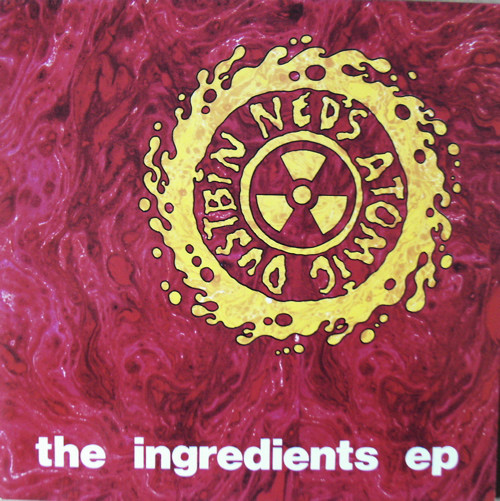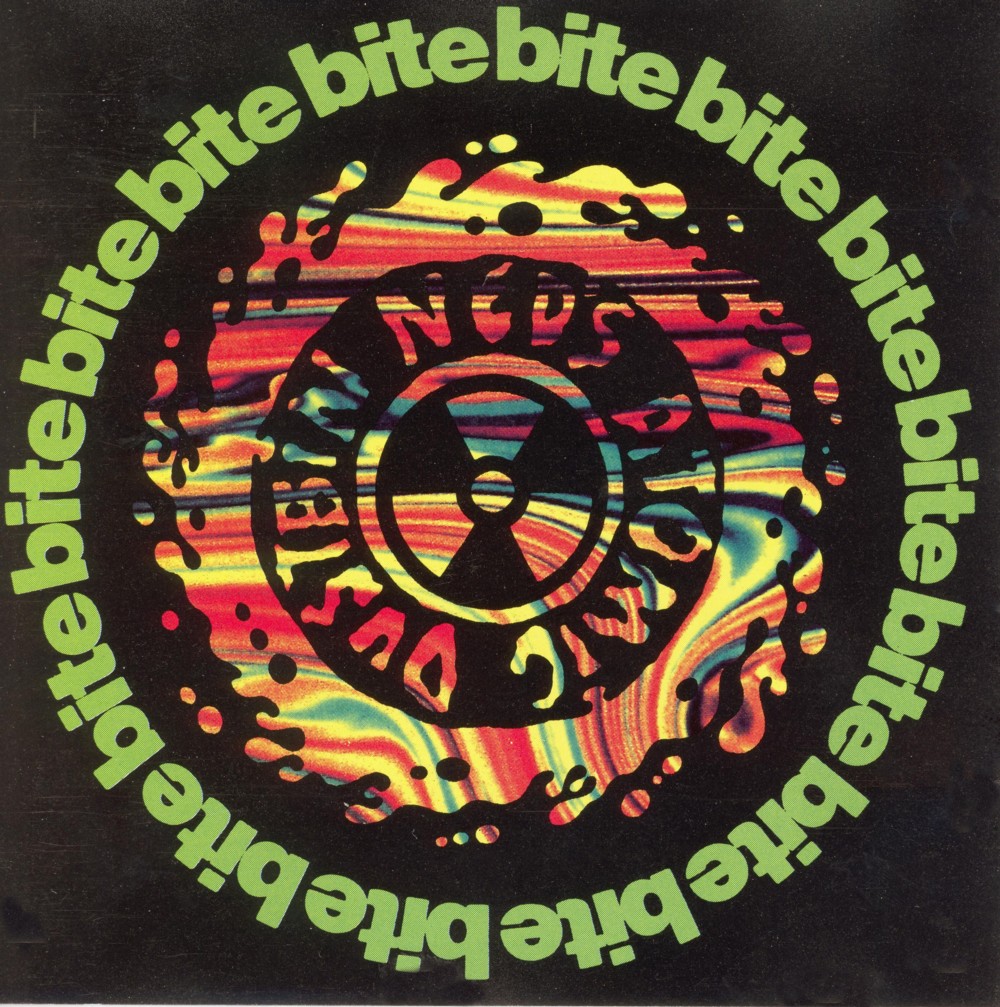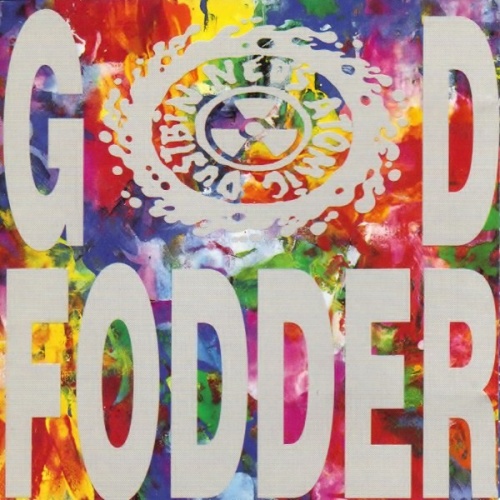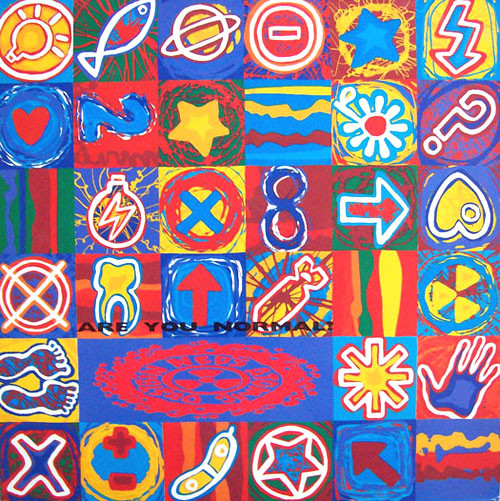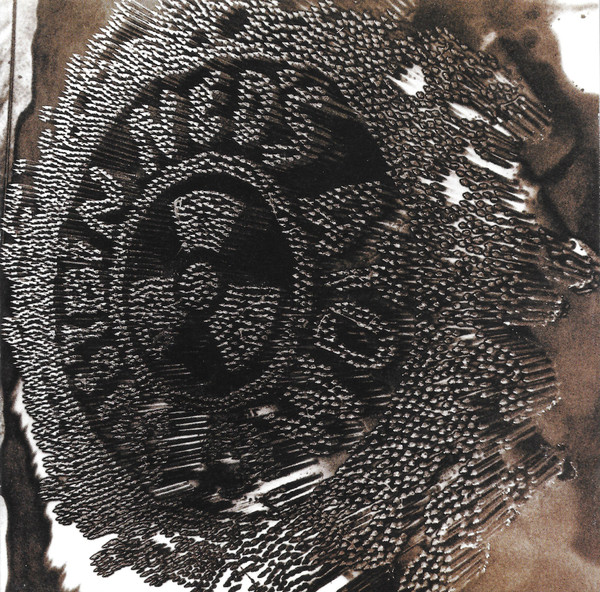Terminally Groovie: A Retrospective of Ned's Atomic Dustbin
Click below on the streaming service of your choice to listen to the playlist as you read along.
In September 1991 I entered the Concert Hall (Masonic Temple) in Toronto with my friend Jorge to catch another of many concerts we were attending during that glorious period of music. The headliner was Jesus Jones, who were riding a wave of crossover popularity after the release of their second album, Doubt, which included their North American breakthrough single, “Right Here, Right Now.” We didn’t always catch the opening act at most shows but that night I had heard of the opener but didn’t know their music; and were happy to show up early enough to be introduced to Ned’s Atomic Dustbin.
At that point, aged 21, I had seen just over twenty concerts in my life, but most had been classic rock, new wave, and pop and I had only just started seeing more alternative artists. I hadn’t yet embraced harder-edged guitar music, but that all changed starting that month because of two events, the release of Nirvana’s Nevermind album and seeing Ned’s Atomic Dustbin. Over the next couple of years I would go back and develop a deeper appreciation for punk and, with grunge all the rage, the heavier alternative rock sounds swirling around the music world during those years. One of my deepest passions was Ned’s, who I would go on to see two more times in 1992 and 1993.
Ned’s, L to R: Gareth ‘Rat’ Pring; Alex Griffin; Jonn Penney; Dan Worton; & Mat Cheslin
In the Concert Hall that night Ned’s came on and hit us with a sonic assault of which I’d never experienced. The songs were fast and had a rumbling energy that hit you squarely in the chest. I can’t recall what the first song was, but by the time it finished I was exhausted and exhilarated. I couldn’t remember a band ever affecting me like that so fully and immediately. I instantly understood the power and joy of a great, hard rockin’ tune played full-tilt in a sweaty, small venue. It changed my musical tastes forever. By the end of Ned’s set I was converted to this band and, even though Jesus Jones put on a great show (I recall a rather epic crescendo to the song, “Blissed,” to end the show), they could have blown up the building with their sound and I don’t think it would have impressed me as much as Ned’s Atomic Dustbin had done. What’s more, usually when a band blows my socks off on first showing, subsequent shows underwhelm, lacking the surprise and delight of the first impression. Not so for Ned’s, who perhaps couldn’t ever repeat that first impression on me quite to the same degree, but never failed to leave me deliriously happy after their shows.
Ned’s recorded sound didn’t catch their live energy to the same degree, but still made for great listening. The source of the band’s deep and powerful sound was two bass players, which took me a few songs to realize when I first saw them. Alex Griffin powered the melody along with Jonn Penney’s energetic vocals and Gareth ‘Rat’ Pring’s rip-roaring guitar, while Mat Cheslin’s bass paired with Dan Worton’s frenetic drumming to lay down that chest-rumbling rhythm foundation. As their sound progressed, Alex also provided keyboards to give the band a lighter, electro-pop sound to balance off the heavy bottom end of their songs. The other aspect of their shows was their energy, with Jonn flinging himself around the stage with reckless abandon, his long hair flipping all over the place, while Rat played furiously to the right of the stage behind a veil of hair, with leg’s spread out as if he’d be knocked over if not fully hunkered down to the stage. The two bass players paired up to the left of Jonn, like a pair of cannons pointed at the audience.
Ned’s started in Stourbridge, England, just west of Birmingham, in late 1987 as teens and part of a local scene of high-energy rock bands in the English Midlands – dubbed ‘grebo’ by the music press (a slang term for local long-haired bikers and rockers) – which included the likes of The Wonder Stuff and Pop Will Eat Itself. Formed during high school, Ned’s started as a goth rock act and took their name from the title of an episode of the influential 1950s BBC radio comedy show, The Goon Show. By 1990 they had refined their sound into a harder pop-dance-rock sound that evolved the raw guitar energy of punk overlaid with the heavier influence of heavy metal’s bass and mixed with danceable drums and hook-filled melodies. It made for a deeply satisfying, fresh form of rock that didn’t fit into any sub genres of rock.
Jonn; Dan; Mat; Rat & Alex
After a successful opening slot on The Wonder Stuff’s tour the band signed with indie label, Chapter 22 Records, and released their debut EP, The Ingredients EP, in April 1990. It had two excellent songs on side one, “Aim” and “Plug Me In,” backed by two phenomenal songs on side two, “Grey Cell Green” and “Terminally Groovie.” “Grey Cell Green” was one of the most brilliant, hard-rocking pop songs ever written. It was fast paced, had that rumbling double-bass, an epic, vast sound, and an instantly infectious melody. It remains one of my all-time favourite tracks. “Terminally Groovie” was propelled by Worton’s machine-gun drumming and was structured around the thundering chorus that gave the fast-paced song an ominous sounding break, as if the song was preparing to bring on a cataclysm, all before launching into an AC/DC-like guitar riff.
Despite the initial EP’s strength, it only reached #92 in the UK singles chart, but was outdone with a #53 showing by their next single in July 1990, another epic track, “Kill Your Television.” The single had a great remix of it also along with another fantastic pair of tunes, “That’s Nice” and “Sentence.” It reached #53 on the UK chart, which was disappointing given the utter brilliance of “Kill Your Television” – which yes, remains another all-time fave of mine. Along with “Grey Cell Green,” the pair stood like giants among Ned’s discography and challenged the boys to equal them throughout the rest of their run, which despite a lot of great music, they never did. As readers of this blog may know, I love me a fast-strumming tune, and “Kill Your Television” was that in heaps, riding in waves over intertwining, undulating basslines and furious drumming that propelled the song through its exhausting pace. Jonn delivered the catchy melody and all of it would come to a pause before delivering another frenetic pace change. It’s like the song let you catch your breath before taking you through another exhilarating sprint. In that respect, it had the same fast-slow-fast formula propelling many American alt-rock acts like The Pixies and Nirvana.
After the band had a buzz-creating spot at the Reading Festival in August, expectations were high for the next single in October, “Until You Find Out.” It also ran at a speedy clip but was a little more pop-styled and didn’t quite capture the magic of the prior singles. It hit #51 in the charts, hampered by their label’s limited distribution capabilities. This caused the band to accept the interest of the majors that had come courting, signing with Sony Records but with an agreement the songs would be recorded under their own label, Furtive, which would be a sub to Sony. Though the band was unaware of it, Chapter 22 cashed in on the band’s growing success by releasing Bite in late 1990, which was comprised of The Ingredients EP and “Kill Your Television” single and B-sides, and two additional, previously unreleased tracks, “She’s Gone,” and “The Old New ‘Un”. It got the band onto the album charts for the first time, reaching #72 in the UK, and closed their indie chapter.
Ned’s first major label release was the single, “Happy,” in March 1991, which reached #16 in the UK but also cracked the top twenty in the US Modern Rock chart, showing the benefits of their major label status. “Happy” was a song I never warmed up to, lacking the energy and polish of the rest of their work. It was a good song, but never fully took off, feeling a little held-back compared to the rest of their work. However, its success paved the way for their first LP in April 1991, God Fodder.
Dan; Mat; Alex; Jonn; & Rat
The album included new and more polished (unfortunately) recordings of “Grey Cell Green” and “Kill Your Television” (this playlist uses the originals, as featured on Bite). The LP also included “Until You Find Out” and “Happy,” making all their singles available in one place for the first time. However, the real joy was capturing the band across the broader offering of thirteen impeccable songs. Sure, the raw guitars and heavy-metal power of their earlier tracks were refined into a more balanced pop formula, but their spirit and unique sound still shone through. A song like, “Cut Up,” wouldn’t work as effectively and work into your ear as deeply if the guitar, bass, and drums thundered to an overpowering degree. The lighter approach allowed the song’s infectious rhythm and Jonn’s echoey vocal to play out, balancing their strong sound with a dance-pop, fast-slow formula to a perfect result. Whereas “Throwing Things” still captured the power-pop, punk vibe of their earlier work and live show while bringing in a bright sound that made you want to dance more than hunker down from the sonic assault. God Fodder was one of the best albums of the 1990s, and the fact that it only made it to #4 in the UK album chart only shows how strong the music scene was back then.
Alongside Madchester in the UK and grunge in the US, it was hard for Ned’s Atomic Dustbin to crack through, but they still developed a loyal following of fans, appropriately dubbed, ‘Neds’. Like the music, their scene was known for mixing various styles, mixing long hair crimped or in dreadlocks with self-designed, unique t-shirts and baggy shorts. The fans were also big on crowd surfing. It was a UK version of grunge, really. As is often the case with art that mixes genres, it can be a struggle to snag enough of any particular fanbase, and thus be left with a limited result. Such seemed to be the case for Ned’s Atomic Dustbin.
The next album, Are You Normal?, was released in November 1992. Much less heavy than their previous sound and more pop oriented, it offered a more accessible and polished sound, featuring more electronics and dance ingredients along with their thick drum and bass and driving guitar sound. Alex’s shift on several tracks from bass to keyboards lessened the heft of the double-bass sound. The album delivered a single, “Not Sleeping Around,” that almost equalled “Happy’s” result with a #19 showing in the UK but also reached #1 in the newish Modern Rock chart in the US. The song’s sound perfectly encapsulated the new Ned’s sound, including a rather electro remix on the single. The album was again solid and consistent, with no weak tracks and a great, fun listen from start to finish. It reached #13 in the UK chart.
It would not be until March 1995 that the band released their third and final album, Brainbloodvolume, which I could only assume was titled to reflect the effects of their live sound on one’s head. As grunge and the other heavy rock sounds of the ‘90s were dying down and Britpop had taken the mantle as the dominant sound, Ned’s failed to see the same results as their prior releases. The album did not chart (it was released in the US first, meaning it was only available as an import in the UK for the first while) and the single, a rather weak track, “All I Ask of Myself is that I Hold Together,” reached a mediocre spot of #33 on the UK’s singles chart. A second single, “Stuck,” only reached #64. I admit I didn’t pay much attention to Brainbloodvolume when it came out and didn’t see the band when they came around and it took a long time for the album to work its way into my good graces. Today, I love the album and play it often, embracing the band’s heavy, electro-rock sound. There were more slow songs on it, allowing greater variety in their sound. Their penchant for melodies and hooks were still there as much as ever. I think the album remains a vastly overlooked entry from the decade and was a precursor to the rock sounds that would be heard in the early 2000s. Though the reasons aren’t clear, though perhaps by then the band had simply run its course and, with waning results, after the North American tour to promote the album they decided to call it quits after the final show in New York in 1995.
Ned’s Atomic Dustbin reformed in 2000 with a different line-up. Members of Jonn’s new band, Groundswell, joined to replace Mat Cheslin and Rat. This line-up played shows in the UK over the next several years but only released one single in 2006, “Hibernation,” and a live, in-studio recording of older songs in 2004, called Session.
In more recent times, still givin’ it…
In 2008, the band announced the original line-up was reforming and they have performed off and on ever since across the UK without releasing any new music. They have recently toured with their fellow Stourbridge mates, first with The Wonder Stuff and most recently with PWEI. It seems unlikely we’ll get to see them again in North America, but in today’s music world where the only money is made on touring, never say never.
Ned’s Atomic Dustbin were one of the most thrilling and unique bands of the early ‘90s. Though they failed to garner a wide audience, they issued some of the best albums of the decade and left an impeccable legacy of songs. Even today the songs jump with energy, passion, and power that thrill the ear and heart, despite over twenty years of repeated listens.
The Playlist - Song \ Album (year)
Grey Cell Green \ The Ingredients EP (1990)
Terminally Groovie \ The Ingredients EP (1990)
Kill Your Television \ Non-album single (1990)
The Old New ‘Un \ Bite (compilation) (1990)
Cut Up \ God Fodder (1991)
Throwing Things \ God Fodder (1991)
Until You Find Out \ God Fodder (1991)
Walking Through Syrup \ Are You Normal? (1992)
Who Goes First? \ Are You Normal? (1992)
Not Sleeping Around \ Are You Normal? (1992)
You Don’t Want to Do That \ Are You Normal? (1992)
Premonition \ Brainbloodvolume (1995)
Stuck \ Brainbloodvolume (1995)
I Want it Over \ Brainbloodvolume (1995)
Traffic \ Brainbloodvolume (1995)









